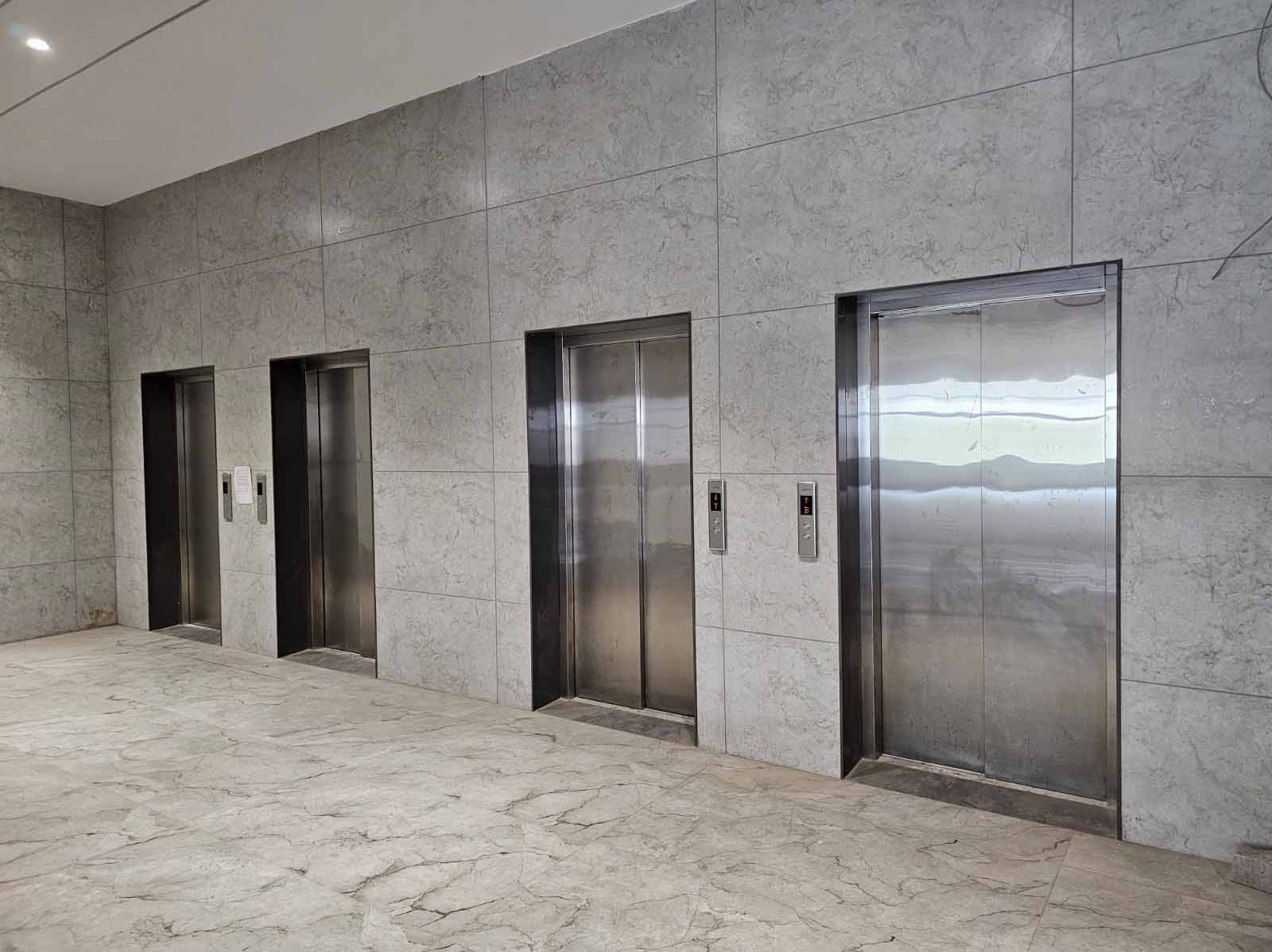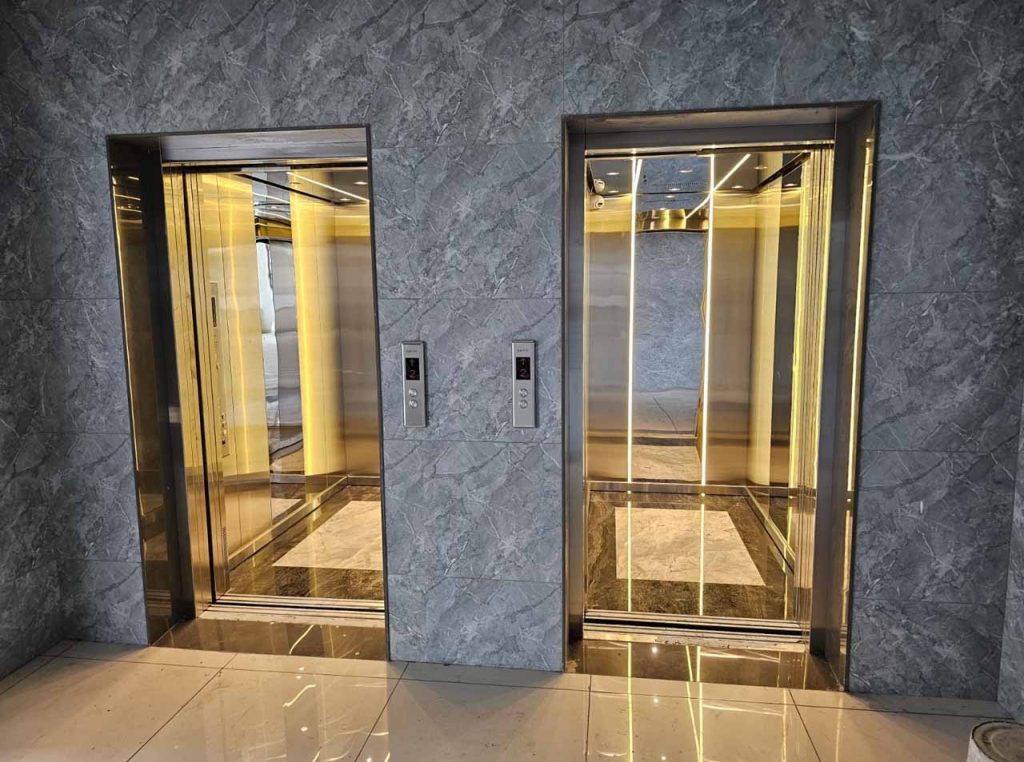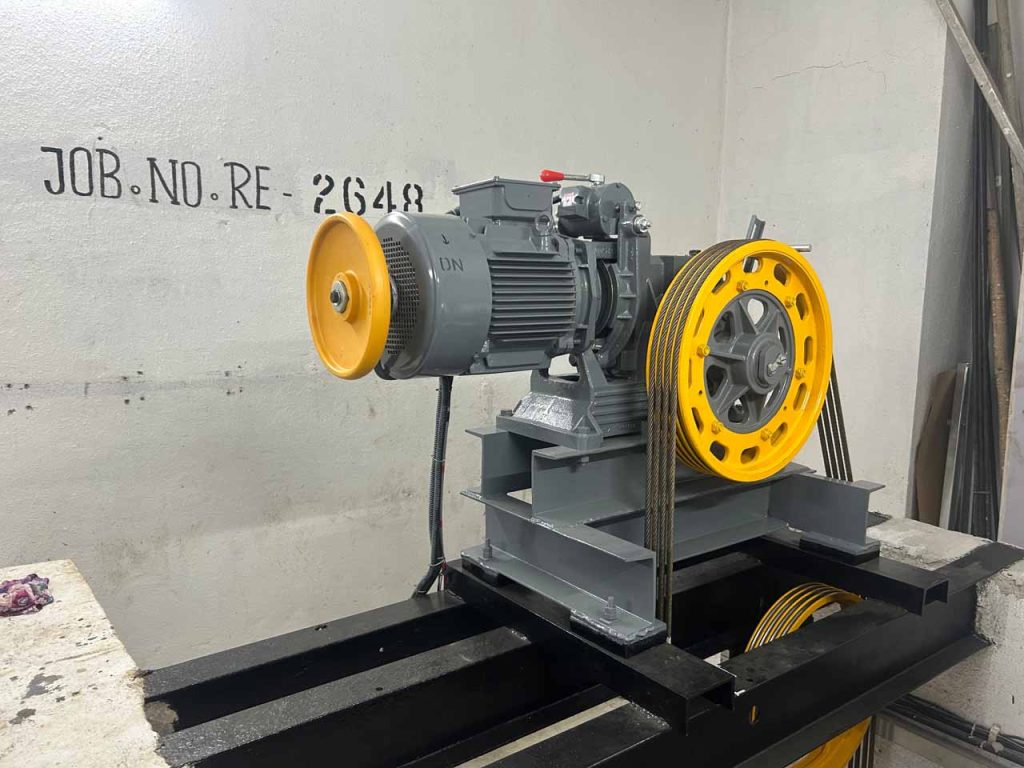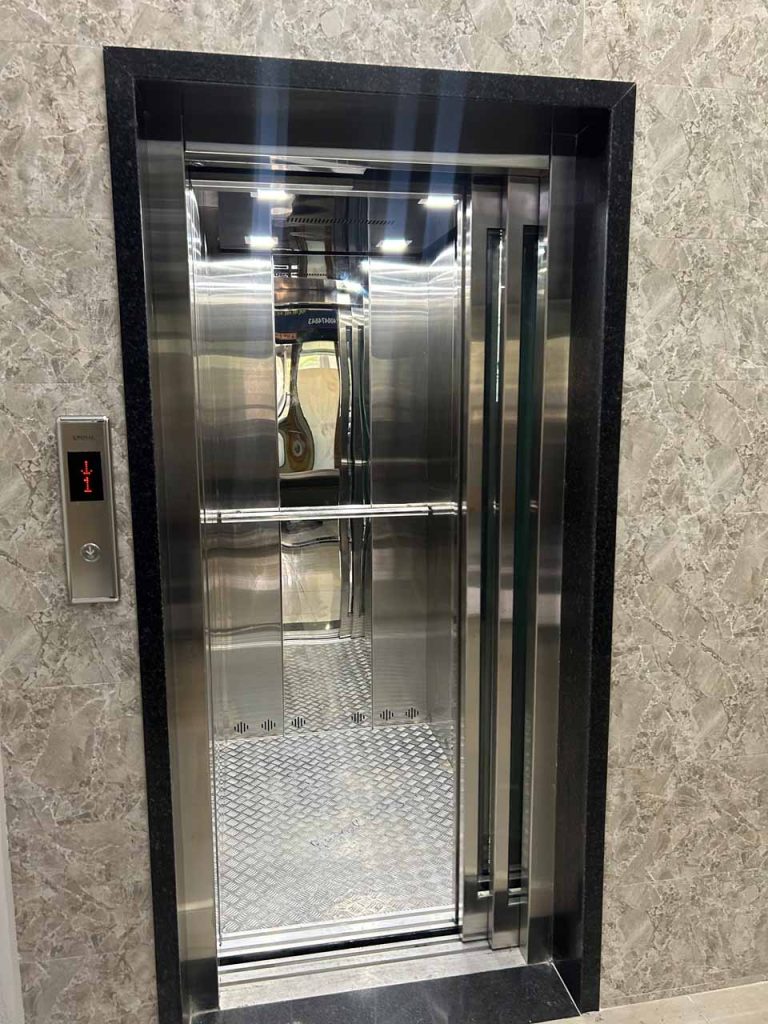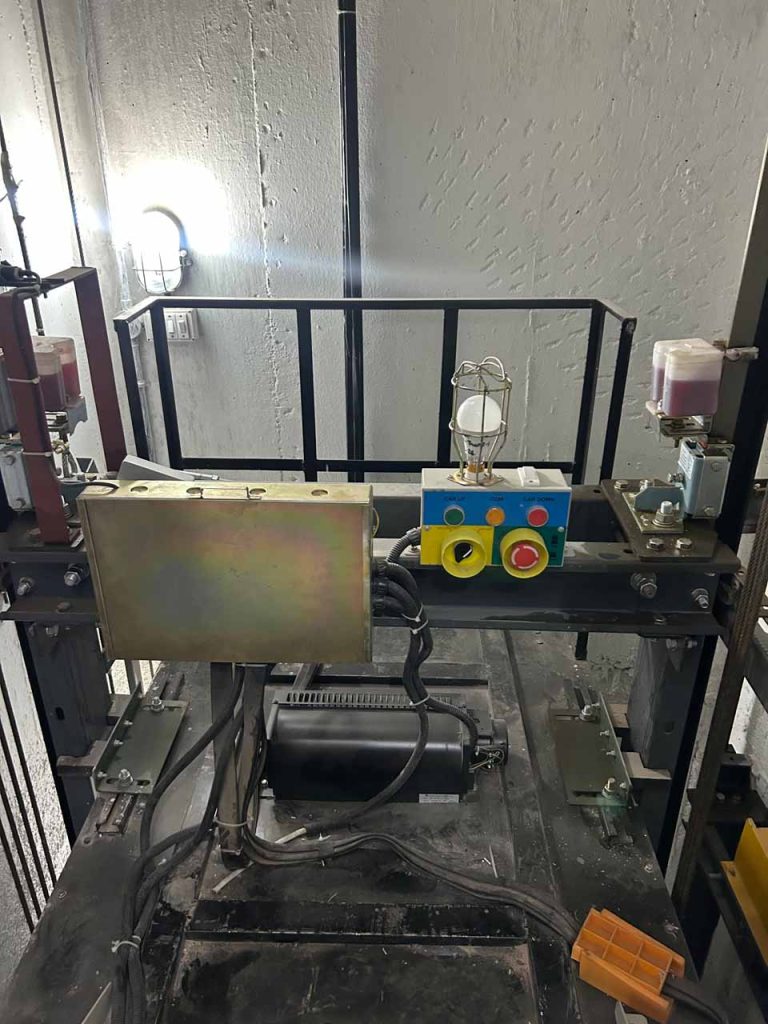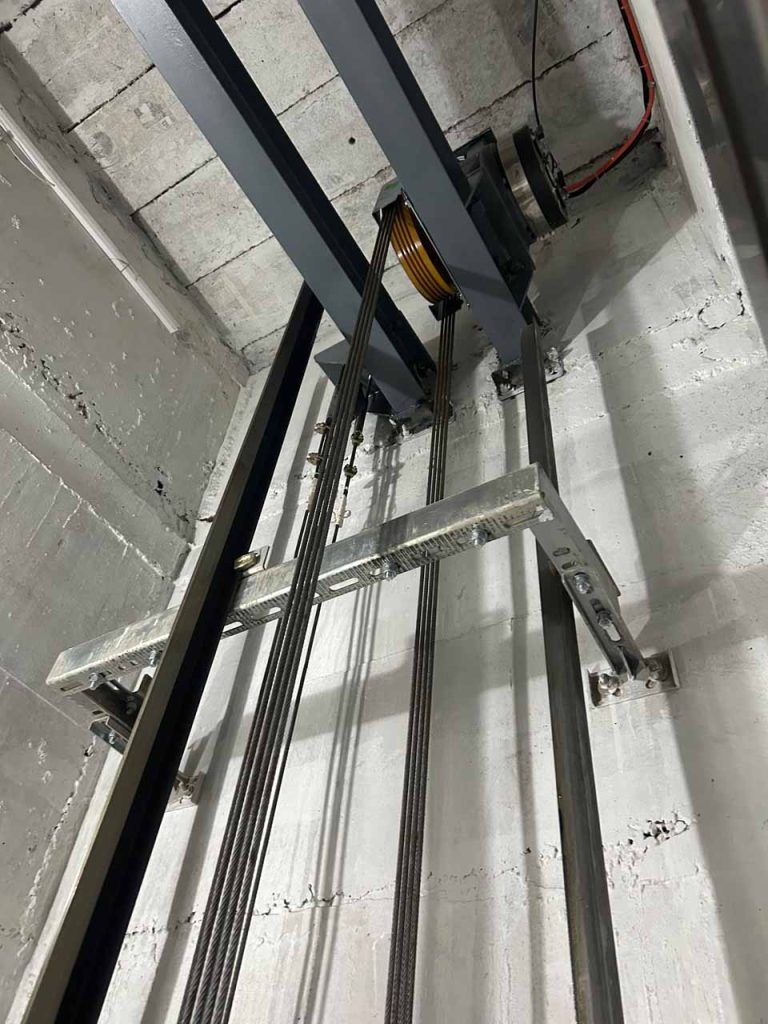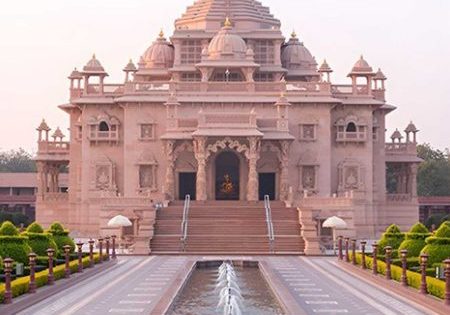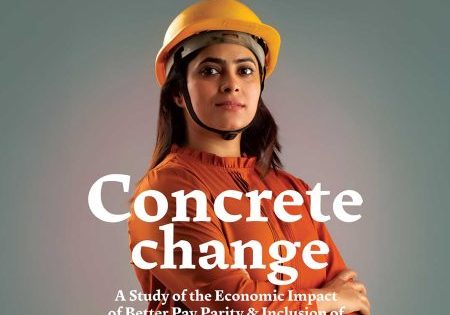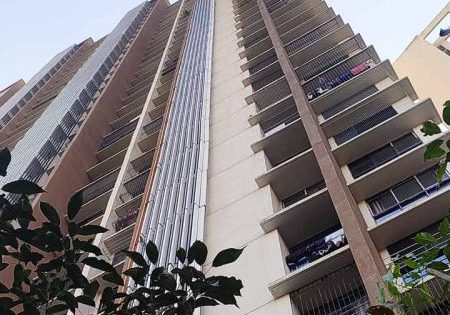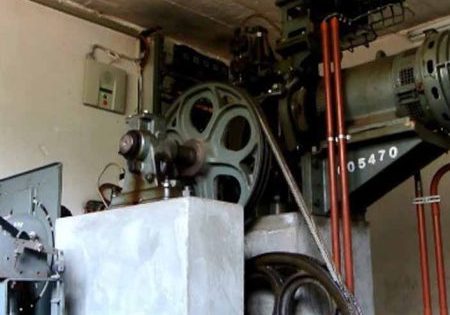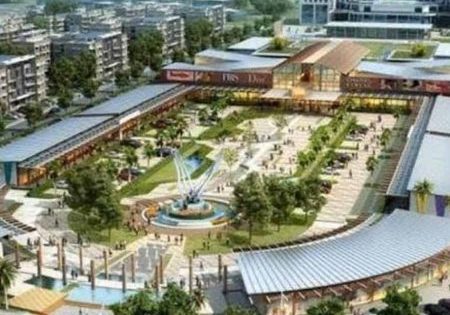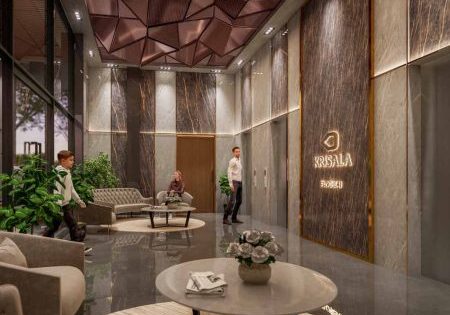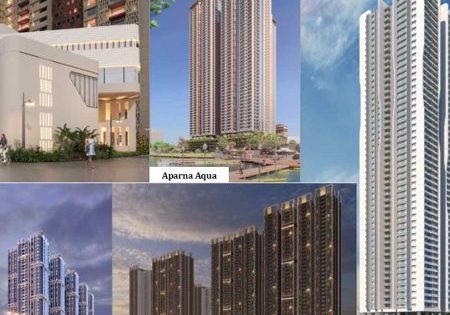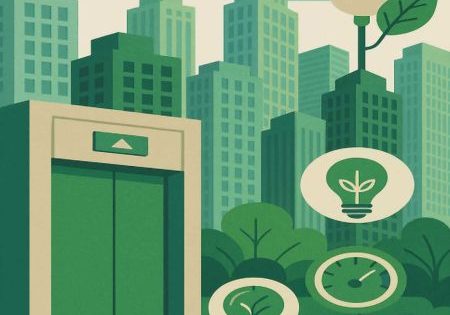R. R. Patil (RP), founder of Royal Elevators, takes a trip down memory lane in conversation with your author (SR).
by Suresh Rathod
SR: How does it feel to have completed 50 years in the vertical transportation (VT) industry and to be commemorating the Golden Jubilee of your own company?
RP: It really feels unreal, and I would like to pinch myself before I recount my beginning. Reflecting on the past, it has been a long and humble experience. I hail from a humble background. My father was a government servant with seven children: me and my six brothers. Notwithstanding the economic difficulties, four of us today have set up our own elevator companies, and that itself speaks volumes about how far we have progressed.
My childhood was a life of struggle. Because of my father’s job postings, I went to nine different schools until secondary school. We had hard times, so much so that I did not even wear slippers until I was 17 years old. I still recall purchasing my first pair of second-hand slippers for ₹2 at Chor Bazaar in 1965, the year I moved to Mumbai from Palghar-Tarapur. Even a 50-paisa rice plate used to be costly for me at that time. I’d usually manage on a 25-paisa misal pav meal at the General Post Office canteen.
To save money, I’d walk almost 8 to 10 km a day from Cotton Green to Mahim. It was around this time that I started my apprenticeship as an electrician at the Mumbai Port Trust. Interestingly, it was here that I first became involved with elevator maintenance. The lifts back then were manually operated with just a handle for up and down, no buttons. You’d have to stop the elevator at just the right level yourself. Those experiences shaped my understanding of the mechanics and reliability of elevators.
I returned to work at the Electrical Construction and Equipment Co. after finishing my three-year apprenticeship. What we know as Schindler India today is what I was part of for nearly two years, from 1966 until 1967. That provided the stepping stone for me to go to work for Otis Elevator and obtain my second big break. There was a vacancy, and I applied. I was so lucky to get in.
Today, at 78 years of age, reflecting on almost six decades in the VT industry gives me immense pride and gratitude. The journey from being barefoot to establishing Royal Elevators has been nothing but extraordinary.
I started my career with Otis Elevator in 1968, where I worked for 14 valuable years as a technician. Throughout this time, I gained extensive technical knowledge and hands-on experience in lift maintenance. In 1973, the same year I was married, I began doing minor elevator repair and maintenance work on the side, besides my full-time job at Otis. The consistent salary, benefits and bonus at Otis made it a secure job, so secure, in fact, that when I mentioned that I wanted to quit and go into business for myself, my father discouraged me.
But I had a dream. With the advice of Captain Khandge, who was then a lift inspector at the Council Hall and a well-wisher, I was able to get my elevator license in March 1983, a necessary prerequisite to legally practice in this line of business. After a lot of deliberation, I finally quit Otis. The first month after quitting was sleepless. I kept wondering if I had made the right decision.
Luckily, the market reacted well. I began Royal Elevators as a maintenance company first. Since I had been working in the maintenance department of Otis, installation was not my priority in the beginning. My plan was to provide for my family and particularly my six younger brothers. In two years, I managed to purchase a brand-new Fiat car, flat out, no loan. That was an achievement.
At that time, I was working completely out of my home near Makhmali Talao in Thane. My initial elevator installation happened a couple of years later, in 1988, with my own apartment building in Krishna Kunj and then one more in Andheri. Gradually, but surely enough, I got into the installation business.
My first office was a small 6 ft x 8 ft garage space in Mulund where I would stock material and conduct operations. When business improved, I started recruiting staff and expanding. My wife, who worked, quit her job to assist me full time. I then purchased a unit in the Shanti Industrial Estate in Mulund. This was my first official office and workshop, fitted with welding and lift machinery. I registered Royal as a small-scale industry (SSI), and, from there, we started organized operations.
One of my first clients, Usha Nagar in Bhandup, entrusted me with my first maintenance contract. Their trust in me, even though I was in my initial stage and didn’t have a big setup, was crucial. Gradually, I grew in the industrial estate, buying five to six additional units.
One of my guiding principles has been financial prudence: In my whole life, I never took out a loan, neither from a bank nor from any private organization. All payments to vendors were made within 24 h. Not only did this earn me market credibility, but it also provided me with a price edge. I invested each rupee that I earned in the business. Even salaries and statutory dues like Employees’ State Insurance and Provident Fund (PF) were always paid on time. My staff, even those who resigned, received their full dues, gratuity and PF, within a day.
However, not everything was smooth. In 1997, my company faced an income tax raid. The authorities were surprised to find a person who once couldn’t afford slippers now running a business worth lakhs. They remained for 24 h and finally accepted a ₹63 lakh cheque from me. Although I faced a setback, I made sure that none of my suppliers were affected. I paid as usual, on the same day. The problem was due to bad accounting, not ill intent. I did not know inventory standards and tax laws back then.
As the business expanded, so did the challenges. We shifted from manual collapsible-door lifts to high-speed automatic and hydraulic elevators. I had no prior knowledge of these technologies, but through the assistance of friends and ongoing learning, we managed to adapt.
When I obtained my elevator license in 1983, there were barely 20 Indian companies other than the global giants such as Otis and Schindler. Presently, there are more than 500. The big industry problem that remains is the lack of balance in licensing. Perhaps 20 of the companies got their licenses prior to my company getting theirs permanently. Companies like mine are still with temporary licenses, which have to be renewed periodically. I have actively campaigned against this, even heading the elevator association established sometime in 2005. For almost two decades, I headed campaigns to rectify these disparities, approaching contractors, orchestrating protests and petitioning the government, all at a personal cost.
Prior to the COVID-19 pandemic, Royal Elevators had 125 employees. After the pandemic, we now have about 85. Over the last few years, I’ve started moving away from day-to-day activities. My educated family has stepped in: My son-in-law is a mechanical engineer, one daughter is an electronics engineer with an MBA degree and the other is a chartered accountant. I feel proud to see them carry on the legacy.
In retrospect, I am genuinely satisfied with how life has taken me this far. Born into a humble family, with no business legacy in my lineage, it fills me with pride to see Royal Elevators as a known and respected name in the industry today.
I started without any business background. None of my relatives were involved in trade or business. I was the pioneer. But, with sheer willpower, I was able to build something worthwhile in Mumbai. Not only did I establish Royal Elevators from scratch, but I also became a motivational force for others in my family. Three of my brothers joined me in Royal Elevators, learned the business and eventually started their own ventures. Now, I can proudly claim that our whole family is settled, and that’s a very satisfying feeling.
The first major change in my life was when I saw an advertisement from the Bombay Port Trust (BPT) for a national-level apprenticeship program for electricians. My cousin’s sister’s husband was employed by BPT, and with his support and guidance, I submitted my application and got selected. That three-year apprenticeship was the foundation. It provided me with formal technical education and exposure to several trades, including electrical systems, welding and carpentry. The hands-on experience developed the technical foundation that would eventually enable me to get into and be successful within the elevator industry.
Today, Royal Elevators operates across key regions in Maharashtra, Palghar, Boisar, Titwala, Kalyan and Karjat. We’ve built a solid reputation for service quality. Our technical team alone operates with 22 motorcycles, ensuring quick and responsive service. From a single man with no business background to an entrepreneur leading a fully functional and reputed company, I am truly happy and satisfied with the journey.
SR: What changes have you observed in the VT industry during this journey of five decades?
RP: Over the last 50 years, I’ve witnessed a remarkable transformation in the VT industry. In the earlier days, lifts were primarily manual with collapsible doors. Builders often avoided installing lifts in four-story buildings to cut costs, as there was no mandate at the time. However, as customer expectations evolved, it became increasingly difficult to sell flats in such buildings. This shift in demand eventually compelled builders to include lifts even in smaller buildings.
Subsequently, government policies also required buildings that have ground plus five floors to be equipped with elevators, which further picked up the pace. At first, the majority of installations used manual door lifts. Then the shift toward automatic door systems happened, and over time, we progressed toward high-speed elevators.
One of the most massive technological jumps was the addition of gearless lifts, giving smoother and more efficient travel. Gearless elevators are commonplace today, and we’ve adjusted to that. Yet another trend that came with it was the machine-room-less (MRL) lift, one that we have always been against, and rightly so.
The MRL idea, pioneered by companies such as Schindler, was attractive to contractors with promises of cost savings on space and construction, plus the elimination of a separate machine room. Sounds good from a real estate standpoint, but it has brought about tremendous headaches for us installation and maintenance folks.
In MRL systems, all the machinery, including the control panel, is placed inside the shaft itself. This makes both the installation process and continuous maintenance very difficult and dangerous. While we do undertake MRL projects, the task is gigantic, and from safety and service perspectives, we firmly feel this model is defective.
We wholeheartedly support gearless lifts with machine rooms, which provide efficiency without the cost of serviceability. However, gearless lifts without machine rooms — MRLs — are not practical to maintain in the long run and must be revisited in the industry. Stakeholders such as policymakers and elevator associations must now seriously take action to regulate and perhaps limit the use of MRL systems for the sake of public safety and service efficiency.
SR: Which factors, such as leveraging technology, training and usage of manpower, etc., have been most transformational for the VT industry?
RP: Through the decades, the elevator sector has experienced a remarkable change in technology, the utilization of manpower and the availability of material.
Technology has revolutionized the industry greatly. Previously, lift speed would range from 0.65 m/s. Now, based on the building height, we provide high-speed lifts that have speeds of 2, 3 or even 4 m/s. The emergence of skyscrapers and high rises has compelled the need for speedy and efficient VT. Advanced buildings nowadays commonly employ group control systems, wherein two or three elevators are controlled by clever dispatching systems through a single button — unheard of a few decades ago.
Component availability has also come a long way. In the beginning, we found it difficult to source components for auto-door systems and had to often resort to local fabrication or workaround solutions. But with government policy changes and liberalized imports, high-quality components from China, Europe and other international suppliers now easily available, it is much easier to assemble and maintain any kind of lift, ranging from simple manual lifts to sophisticated, high-speed gearless systems.
But the largest gap of today is in formal training and education. Although it is such a critical and burgeoning sector, India does not have even a single specialized college or ITI (Industrial Training Institute) course dealing with elevator technology. In contrast to nations like France, the U.S., Italy or even China, where there are specialized institutes and courses of engineering for the elevator sector, we do not have formal programs to train elevator engineers, mechanics or technicians.
In India, we must train all our technicians in-house, from scratch. After spending money on their training, they all tend to go abroad to the Middle East, join multinational companies or even become entrepreneurs. This perpetual loss of trained manpower is one of the biggest issues this industry faces today.
Until India comes to realize that elevator engineering is a specialized area and establishes proper institutions, the onus of training and nurturing talent will remain private companies like ours.
SR: Would elevator education institutes and industry training programs help create more job opportunities?
RP: Indeed. Setting up specialized elevator education schools and industry-specific training programs would be revolutionary. Not only would it provide more employment opportunities, but it would also cause business to be conducted in a more systematic and professional way.
Nowadays, the greatest challenge of our line is the critical dearth of trained technicians. Every organization is at pains to access skilled personnel. Even if we get new opportunities for projects, we have no choice but to think several times before agreeing on them, simply because we cannot be sure that we’ll get the trained manpower to implement them on schedule.
– R. R. Patil
“Although the industry is well on its way to being on a growth trajectory, education and skill development will be the backbone of making the elevator industry secure about its long-term success and sustainability in India.”
Comprehensive training programs would fill this gap, provide youth with job-friendly skills and by far increase the overall quality and dependability of service in the elevator industry.
The most pervasive shortfall within the entire lift industry is an availability of adequately trained, technically experienced manpower. There is great demand for installation of lifts, but several technicians performing such installation have insufficient formal education and insubstantial in-depth technical insight. It goes on happening nonetheless, but with such situations, there must exist serious concern related to both safety and quality.
The international firms are at an advantage, as they have their own in-house personnel, training facilities and resources to offer better salaries. They can thus control operations more effectively, even though they tend to outsource installation jobs on a contract basis. About 80% of all lift installations by both domestic and international firms are carried out through contractors because of the acute shortage of qualified technicians.
This is an important concern for the sector, and we are attempting to rectify it in all conceivable manners. The government should give serious thought to launching specialized elevator training and education courses, featuring the latest technology and safety measures.
SR: How are you personally dealing with this manpower and knowledge gap?
RP: To deal with the shortage, I have hired several experienced technicians who have retired from prestigious companies like Otis. We try to provide improved salary packages to win over such employees. Further, I have trained more than 50 technicians personally over the years. I would conduct classes, accompany them on project sites and demonstrate on my own even though my own technical education was informal.
My education was mostly through my time at Otis and by establishing relationships with suppliers and industry professionals. I would talk to them regularly, ask questions and learn as I went along. That’s how I developed and grew my business from scratch.
Nowadays, with the speedy development of elevator technology, keeping pace is all the more difficult. Fortunately, my son-in-law is now assisting the business with his technical knowledge. We also go out of our way to get assistance from technology suppliers, particularly those we meet at industry trade fairs. Their assistance is invaluable in enabling us to keep providing quality services despite these obstacles.
SR: In what manner have you seen the elevator market evolve over the past five decades? What demand patterns have emerged?
RP: In the last half a century, the Indian elevator industry has grown and developed by leaps and bounds. Initially, lifts used to be avoided by people, particularly in smaller buildings. However, now the lift has become a necessity, even in mid-sized residential towers and apartment complexes.
With the improvement in lifestyles and people starting to earn better salaries and look for better standards of living, the demand for quality housing with contemporary facilities has risen significantly. Building developers, therefore, are now required to provide luxurious elevators as part of their residential and commercial developments to win buyers.
These changes have resulted in the implementation of high-tech machinery such as gearless systems, high-speed lifts, automatic doors and higher capacity lifts. Duplex and triplex lift systems, as well as multi-cargo elevators in a commercial or industrial structure, have also appeared.
Elevator speed has also undergone a big increase. While in the past lifts ran at a respectable 0.65 m/s, current tall towers call for speeds of 2 to 3 m/s and more. This trend mirrors the general development of Indian urban infrastructure, as well as changing consumer expectations within India.
– R. R. Patil
“Born into a humble family, with no business legacy in my lineage, it fills me with pride to see Royal Elevators as a known and respected name in the industry today.”
We have installed more than 3,000 lifts now. The Indian elevator market is expanding at a phenomenal rate, with almost 12,000 lifts being installed lawfully annually. But if we count illegal installations, the real figure is over 3 lakh lifts, out of which numerous lifts have been installed without valid licenses or regulatory approvals.
This indicates the rapid growth in the elevator industry. Each year, we find a 20% rise in demand. Legal regulations exist in Maharashtra, but in states such as Goa, there is no licensing system. Anyone can fit or run a lift, and this raises grave safety and standardization issues.
If we go back around four decades, there were hardly 500 to 1,000 lifts being installed every year in the state. But with the increased pace of urbanization and people beginning to reside in apartments, the need for elevators took off. Now, this need is not just confined to the metros or large cities — it has spread to villages, talukas and small towns, as well.
Places such as Palghar, Boisar, Titwala and Karjat, which were previously peaceful localities, are now developing at a fast pace. With Palghar being upgraded to a district, the construction and building sector is flourishing, and consequently, the elevator sector is growing to cater to the needs of a developing and urbanizing population.
SR: Which VT segments have been the key growth drivers in recent years?
RP: In the past few years, the major drivers of growth in the VT industry have been auto-door high-speed lifts, car lifts and hydraulic lifts. Car lifts and bungalow lifts specifically have seen extremely fast growth. Previously, these were niche needs, but now they are becoming the norm, particularly for premium homes and standalone bungalows. Even for ground plus one buildings, house owners now prefer to install elevators, not only for ease of use, but also as a status symbol.
Aesthetics and design have also come a long way. What used to be standard with MS powder-coated cabins is now no longer enough, as customers now want classy stainless-steel finishes, sleek modern control panels and personalized interior designs that complement their home interior. Elevators are now an integral part of the luxury experience as much as they are a necessary utility.
SR: How have the sales and installation processes changed over time?
RP: The sales cycle has changed drastically because of heightened competition and altered builder behavior. Earlier, builders would sign elevator deals in the initial stages of construction, usually at excavation or the first slab phase, with advance deposits and definite delivery schedules.
Now, as compared to that, contractors are ordering only at the end stages of the construction, at times on the last slab. They want elevator installation in two or three months, shortening the timelines and putting vendors under pressure.
Also, the increased number of elevator companies and local contractors, including international players with competitive pricing, has severely compressed profit margins. Whereas in the past we could maintain good margins, today such profits have come down by almost 50% because of fierce competition and price-based negotiations.
SR: How have the expectations and attitudes of customers and end users of VT changed over the past five decades? Do you see the demand drivers changing or remaining the same in the near future?
RP: The demand for VT will undoubtedly continue to rise. The building industry in countries like the Arab nations and China began decades ago, but in India, we’re seeing a significant boom in multi-story constructions now. As the building industry grows in India, the demand for elevators will also increase. The main challenge, however, lies in the availability of skilled manpower. This is a critical issue that the government needs to address seriously.
The real estate business has also largely impacted the growth of the elevator industry. Most newer technologies and offerings, like the high-speed elevators and augmented capacity, have been emulated from other economies, particularly from China and other world leaders in the sector. Additionally, now we can find new innovations such as air conditioners in elevators — a new phenomenon witnessed in the marketplace.
The requirement for elevators in industries such as hotels, offices and upscale homes is also expanding very quickly, with more contemporary and advanced designs also rising. An issue that requires urgency is the longevity of elevators. As vehicles have an expiration date, we don’t have a specific rule on how long an elevator can last before needing to be replaced. Today, elevators are also able to last without needing to be replaced, but there is no required time frame for such.
Ideally, lifts should last a maximum of 15 years. Beyond this time, it’s understandable to replace them with new ones. Modernization processes, where parts of the lift are replaced, are prevalent, but this is not a complete replacement. Accidents usually happen because of poor maintenance or the absence of skilled technicians, which results in irregular and poor servicing. In order to avoid such accidents, there should be mandatory rules for regular inspection and replacement by the government. Similar to cars, elevators too must have a lifecycle when it is essential to completely replace them to maintain safety. The government and licensing bodies need to impose this regulation in the interest of the industry and people.
SR: How have technology advancements enabled making elevators faster and easier to access? To what extent do you see the market for elevators being refurbished or upgraded growing further as we move forward?
RP: The elevator market has experienced dramatic growth because of advancements in technology, especially in upgrades and modernization. For instance, the former collapsible-door lifts have given way to auto door systems fitted with automatic rescue devices (ARDs). These types of devices were not widely fitted before, but have now become an indispensable feature in the event of power failure. The ARD operates on batteries and provides a mechanism to ensure the lift safely descends to the nearest floor. In addition to this, overload devices have been made available to carry additional passengers without compromising on safety measures.
This transition to increased safety features has been especially important in the past eight to 10 years. In fact, the government has now made it compulsory to fit ARDs in lifts, which is a huge leap toward increasing passenger safety. New safety measures have also been introduced, such as systems that ensure the lift does not fall even if all three ropes are cut at the same time.
All over India, the market is witnessing explosive growth. There has been an increase in domestic suppliers and makers of elevator machinery and components with tremendous action in major cities such as Ahmedabad, where elevator machinery and railings are being found more and more locally from China. This boom is not only confined to major cities such as Mumbai, but is spreading across smaller cities and towns, as well.
But the sector is hindered by the lack of trained manpower and the requirement for regular government policies and support to facilitate development. As the construction sector grows and new buildings are built every day, elevators remain an important aspect of city growth. Since buildings last for a span of 30-40 years before demolition, the requirement for modernization and upgrading will only increase, making the market for more efficient, safe and advanced elevators.
Albeit the fantastic development, we still have an enormous gap in technical education. We are still dependent on worldwide concepts from American, Chinese and Japanese companies. We need elevator engineering colleges and training institutes in India to foster innovation and develop our own indigenous expertise. Although the industry is well on its way to being on a growth trajectory, education and skill development will be the backbone of making the elevator industry secure about its long-term success and sustainability in India.
In summary, although the industry has seen great strides and has a promising future, it is essential to tackle the issue of the shortage of manpower and lack of technical training to maximize the opportunities that await it. By making the foundation of skilled labor stronger and driving innovation, we can ensure that India’s elevator market keeps on growing and developing according to global standards.
Get more of Elevator World. Sign up for our free e-newsletter.
